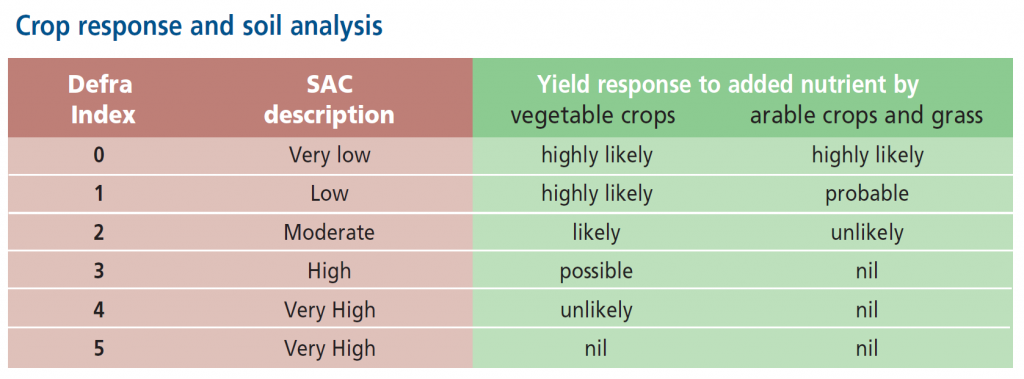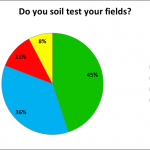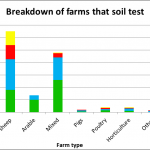Soil analysis is only as good as the sample taken. A sample normally consists of about 1kg of soil which is representative of the whole field / area to be tested.
- Use a suitable tool (sampling auger / soil corer)
- Sample to a consistent depth, normal depth is 6″ (15cm) for arable soils, and 3″ (7.5cm) for grassland
- Walk the field in a W taking regular samples (for a regular shaped field, sample 7 cores per leg of the W)
- Mix all samples to form a single representative sample. Thoroughly mix all cores and take a subsample from this to send to the lab
- Sample at the same time every year
- Avoid sampling under extreme conditions, eg waterlogged or very dry soil
- Don’t sample within 8 weeks of fertilising / 12 weeks of manure or slurry application for P, K and Mg analysis, or sooner than 12 months after liming for pH analysis
- If sampling to diagnose a crop problem, take multi cored samples (at best 16) from areas of poor growth and separate these from normal areas. The relative values between good and poor will be more informative that the actual values of the problem area.




